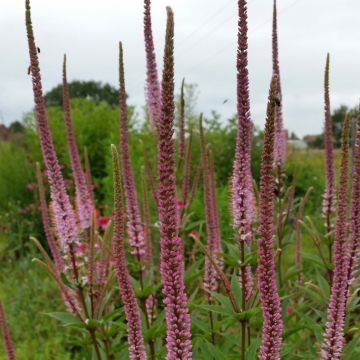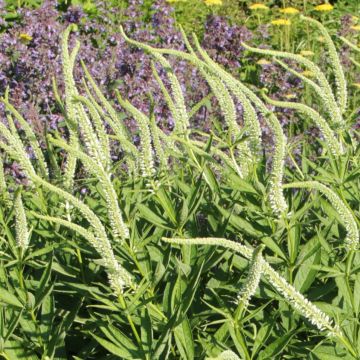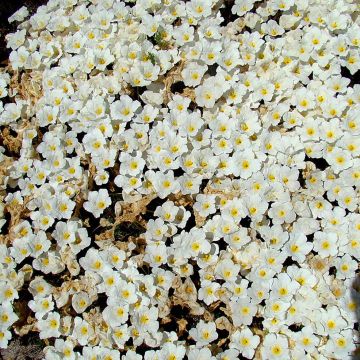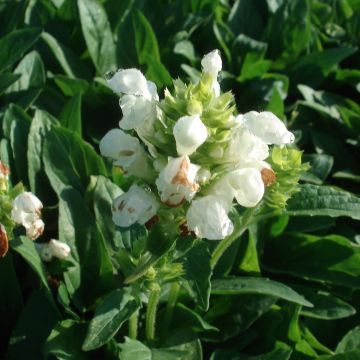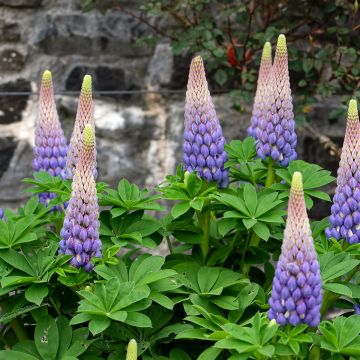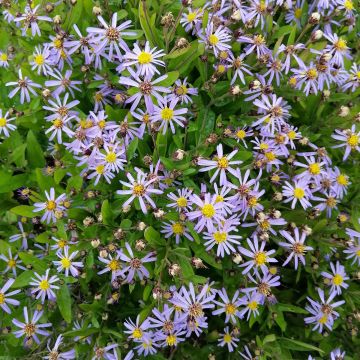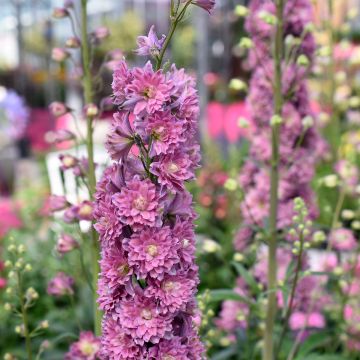

Veronica longifolia First Lady - Véronique à longues feuilles
Veronica longifolia First Lady
Veronica longifolia First Lady
Longleaf Speedwell, Garden Speedwell, Long-leaf Veronica
This item cannot be shipped to the selected country
Delivery charge from €5.90
Delivery charge from €5.90
Delivery charge from €5.90
More information
Schedule delivery date,
and select date in basket
This plant carries a 12 months recovery warranty
More information
We guarantee the quality of our plants for a full growing cycle, and will replace at our expense any plant that fails to recover under normal climatic and planting conditions.
From €5.90 for pickup delivery and €6.90 for home delivery
Express home delivery from €8.90.
From €5.90 for pickup delivery and €6.90 for home delivery
Express home delivery from €8.90.
From €5.90 for pickup delivery and €6.90 for home delivery
Express home delivery from €8.90.
Does this plant fit my garden?
Set up your Plantfit profile →
Description
Veronica longifolia 'First Lady' is a medium-sized cultivar of Long-leaved Speedwell from the First series, which also includes 'First Glory', 'First Match', and 'First Love'. This series is characterized by compact and floriferous, long-flowering varieties. The flower spikes of 'First Lady' are white, short and thick, dense and numerous between June and September. This spectacular, upright and sculptural perennial enlivens borders with erect spikes that attract pollinators. It is moist soil plant, ideal for water edges or in borders with moist soil, in sun or partial shade.
Veronica longifolia is a herbaceous plant of the Plantaginaceae family, found in northern and central Europe and Asia. It forms quite large with erect stems, sometimes over 1 m (3ft) in the wild. 'First Lady' is a smaller, highly floriferous form that reaches 50 to 60 cm (20 to 24in) high and 60 cm (24in) wide, with an upright bushy habit. Its deciduous leaves can be opposite, but are often whorled in groups of three or four. Fairly narrow and lanceolate with short petioles, their blades are deeply toothed, dark green tinged with silver, 10-12 cm (4-5in) long. It flowers between June and September with very dense racemes (clusters), resembling narrow spikes, with tightly packed tiny, tubular, white flowers with four petals and two prominent stamens. The flowers are nectar-rich and attractive to bees, followed heart-shaped capsules. The deciduous vegetation emerges in spring and withers in autumn.
This hardy speedwell loves bright exposures and rich, moist soil. It blends well with lots of plants and creates magnificent summer compositions, on the banks of a pond. Plant it alongside eupatoriums, meadowsweets, Purple Loosestrife or Filipendula rubra 'Venusta' . In a wilder style, in the middle of a border, this elegant perennial is very successful in combination with tall grasses: Miscanthus, Panicum, Stipa. A planting with old roses, such as Felicia or Cornelia for example, is very elegant.
Report an error about the product description
Flowering
Foliage
Plant habit
Botanical data
Veronica
longifolia
First Lady
Scrophulariaceae
Longleaf Speedwell, Garden Speedwell, Long-leaf Veronica
Cultivar or hybrid
Other Veronica - Speedwell
Planting and care
Veronica longifolia 'First Lady' is easy-to-grow in moist to wet soil. It thrives in humid atmospheres near water. It develops and flowers best in sunny locations. Veronica longifolia can be planted in the garden almost all year round, except during freezing periods and summer droughts. Prune the faded flower stems to promote more flowers. Adding compost at the base of the plant every spring will give it vigour. Avoid using nitrogen-rich fertilisers, as they will weaken the plant and make its stems droop more easily. Prune to the base in spring and fresh foliage will emerge.
Planting period
Intended location
Care
This item has not been reviewed yet - be the first to leave a review about it.
Summer flowering perennials
Haven't found what you were looking for?
Hardiness is the lowest winter temperature a plant can endure without suffering serious damage or even dying. However, hardiness is affected by location (a sheltered area, such as a patio), protection (winter cover) and soil type (hardiness is improved by well-drained soil).

Photo Sharing Terms & Conditions
In order to encourage gardeners to interact and share their experiences, Promesse de fleurs offers various media enabling content to be uploaded onto its Site - in particular via the ‘Photo sharing’ module.
The User agrees to refrain from:
- Posting any content that is illegal, prejudicial, insulting, racist, inciteful to hatred, revisionist, contrary to public decency, that infringes on privacy or on the privacy rights of third parties, in particular the publicity rights of persons and goods, intellectual property rights, or the right to privacy.
- Submitting content on behalf of a third party;
- Impersonate the identity of a third party and/or publish any personal information about a third party;
In general, the User undertakes to refrain from any unethical behaviour.
All Content (in particular text, comments, files, images, photos, videos, creative works, etc.), which may be subject to property or intellectual property rights, image or other private rights, shall remain the property of the User, subject to the limited rights granted by the terms of the licence granted by Promesse de fleurs as stated below. Users are at liberty to publish or not to publish such Content on the Site, notably via the ‘Photo Sharing’ facility, and accept that this Content shall be made public and freely accessible, notably on the Internet.
Users further acknowledge, undertake to have ,and guarantee that they hold all necessary rights and permissions to publish such material on the Site, in particular with regard to the legislation in force pertaining to any privacy, property, intellectual property, image, or contractual rights, or rights of any other nature. By publishing such Content on the Site, Users acknowledge accepting full liability as publishers of the Content within the meaning of the law, and grant Promesse de fleurs, free of charge, an inclusive, worldwide licence for the said Content for the entire duration of its publication, including all reproduction, representation, up/downloading, displaying, performing, transmission, and storage rights.
Users also grant permission for their name to be linked to the Content and accept that this link may not always be made available.
By engaging in posting material, Users consent to their Content becoming automatically accessible on the Internet, in particular on other sites and/or blogs and/or web pages of the Promesse de fleurs site, including in particular social pages and the Promesse de fleurs catalogue.
Users may secure the removal of entrusted content free of charge by issuing a simple request via our contact form.
The flowering period indicated on our website applies to countries and regions located in USDA zone 8 (France, the United Kingdom, Ireland, the Netherlands, etc.)
It will vary according to where you live:
- In zones 9 to 10 (Italy, Spain, Greece, etc.), flowering will occur about 2 to 4 weeks earlier.
- In zones 6 to 7 (Germany, Poland, Slovenia, and lower mountainous regions), flowering will be delayed by 2 to 3 weeks.
- In zone 5 (Central Europe, Scandinavia), blooming will be delayed by 3 to 5 weeks.
In temperate climates, pruning of spring-flowering shrubs (forsythia, spireas, etc.) should be done just after flowering.
Pruning of summer-flowering shrubs (Indian Lilac, Perovskia, etc.) can be done in winter or spring.
In cold regions as well as with frost-sensitive plants, avoid pruning too early when severe frosts may still occur.
The planting period indicated on our website applies to countries and regions located in USDA zone 8 (France, United Kingdom, Ireland, Netherlands).
It will vary according to where you live:
- In Mediterranean zones (Marseille, Madrid, Milan, etc.), autumn and winter are the best planting periods.
- In continental zones (Strasbourg, Munich, Vienna, etc.), delay planting by 2 to 3 weeks in spring and bring it forward by 2 to 4 weeks in autumn.
- In mountainous regions (the Alps, Pyrenees, Carpathians, etc.), it is best to plant in late spring (May-June) or late summer (August-September).
The harvesting period indicated on our website applies to countries and regions in USDA zone 8 (France, England, Ireland, the Netherlands).
In colder areas (Scandinavia, Poland, Austria...) fruit and vegetable harvests are likely to be delayed by 3-4 weeks.
In warmer areas (Italy, Spain, Greece, etc.), harvesting will probably take place earlier, depending on weather conditions.
The sowing periods indicated on our website apply to countries and regions within USDA Zone 8 (France, UK, Ireland, Netherlands).
In colder areas (Scandinavia, Poland, Austria...), delay any outdoor sowing by 3-4 weeks, or sow under glass.
In warmer climes (Italy, Spain, Greece, etc.), bring outdoor sowing forward by a few weeks.




































